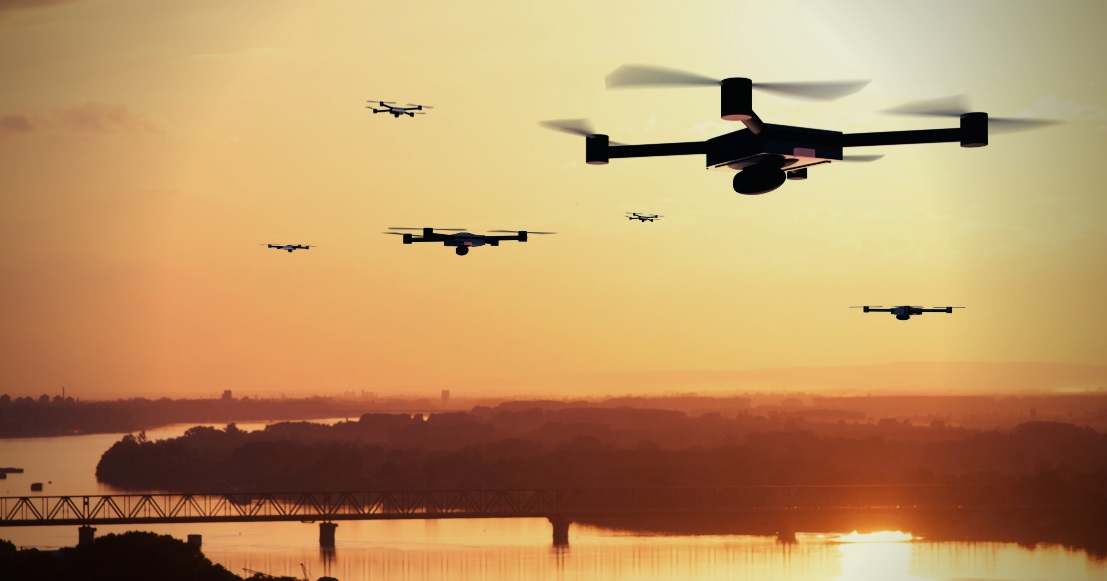‘Flying Battery’ Can Last Up to 2 Hours

Nothing is more annoying than getting into the groove of flying your drone, only to have to bring it down a minute or two later because your battery is almost dead. A large majority of today’s drones can stay in the air for a maximum of 30 minutes, sometimes only able to be done with multiple batteries.
With that said, we’d like to introduce you to Impossible Aerospace, who have created a new drone that’s changing the game.
Just a few days ago on September 10th of this year, the startup company located in Sunnyvale, California introduced the US-1, a quadcopter that is more than capable of keeping itself in the air for up to 2 hours on a single charge. If you have a 3-pound payload on it, however, you can still expect to get up to 78 minutes of airtime.
What’s more, the US-1 is able to recharge up to 75% in as little as 45 minutes when the battery is completely drained to 0%.
“The US-1 is more than just a drone – it’s the first aircraft that was properly designed from the ground up to be electric, using existing battery cells without compromise. It’s not so much an aircraft as it is a flying battery, leveraging an energy source that doubles as its primary structure”, the CEO of Impossible Aerospace, Spencer Gore, commented.
Spencer Gore is an engineer who worked on a number of battery designs for Tesla. At this time of writing, Impossible Aerospace has raised up to $11 million in order to bring the US-1 to the market.
The US-1 has been designed by a team of experienced engineers from SpaceX and Tesla. It was designed with having the battery in mind, ensuring the success of a quadcopter that puts a powerful battery before the performance of the drone itself.
Gore has mentioned that this is how electric aircraft should be being built in the future if they want to have a shred of hope when it comes to competing with displacing petroleum fuels and conventional designs in the entire aviation industry. He even went so far as to hint at some plans that will be incorporating their technology into large aircraft, which could result in a major shift in the future of how our aviation industry works.
The US-1 boasts a 26” frame, is able to reach a top speed of up to 42 mph, and weighs a pretty hefty 15.7 pounds. In comparison, the US-1 is five times in weight next to the Phantom 4 Pro from DJI. This is due to the large LiPo battery, of course.
The LiPo in question is most definitely a powerful one at that. With 1.2 kWh of lithium-ion cells that are spread throughout the body of the US-1, which has an X-shaped body.
Founded back in 2016, Impossible Aerospace created the US-1 with the purpose of introducing it into the commercial market. In fact, they have already received quite a few orders from police departments, firefighters, and even search and rescue teams, probably because the US-1 has a number of beneficial features, including thermal and optical sensors. Orders are expected to be fulfilled later in the year.
The US-1 is more directed to the commercial market because the basic model is currently priced at $7,500, a whopping price for residential drone users to pay. The US-1 model that is designed to be used with a thermal imaging camera, however, will cost a user up to $9,500.
Fortunately, the hardshell case for the thermal imaging camera model will come with a 20” video display, a 12” control screen, a battery that is already built-in, and will be able to receive 1080/60p resolution footage from up to 0.62 m, or 1 km, away from a 1-2 ms latency.
On top of that, Impossible Aerospace can also provide users with a Flir thermal camera for an additional cost.






seems like an everyday drone but with more battery weight and proportionately adjusted motor size. What’s the big deal, the packaging?
While battery does matter, but its not the only thing that drone enthusiasts are looking for. Personally, i wont want to fly for 2 hours, it will be damm tiring not to mention boring. Connections is equally important. Intelligent return to home is another. Less glitches on software and apps would be added plus. More robust and sturdy bird. Did i mentioned flimsy gimbals?